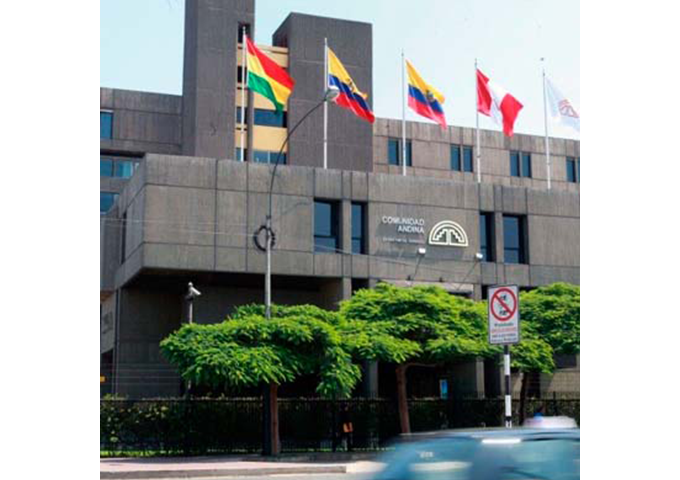The Andean Community and the gender equality, a step for a regional equity inside the Andean Integration System AIS
Juan David Abella Osorio
Juan David Abella Osorio

Jori Lahdenperä, from the Mälardalen University in Sweden, established that the pronounced objective for democratic societies in the world is to ensure that everyone has an equal voice in deciding the orientation of policies and in deciding which party or political group will have control over the government.
Inside these societies, everyone has one equal voice regardless of intelligence, knowledge, education or moral dignity. In addition, the United Nation’s statement of human rights declared that every human has to be seen as possessing the same dignity and rights (Lahdenperä 2012).
However, according to Lahdenperä and the report of The Economist about globalization and the rise of inequality titled “Rich man, poor man”, today still exists a widespread of inequalities in the world with regard to income, wealth and influence (Lahdenperä 2012; The Economist 2007). The complexity of what The Economist calls a “poisonous mix of inequality and sluggish” can be recognized in countries like United Kingdom or United States where a high Gross Domestic Product coexist with high inequalities in distribution, or even in a world in which the divergence between the poor and the rich keeps growing within countries and between countries (Lahdenperä 2012).
According to Professor Ayse Kaya, the issue of worldwide inequality raises a number of questions about the role of key international organizations; one of these questions is embedded to the effectiveness of these Organizations inside a context in which the economic inequality can easily translate into political inequality and the influence of the richest can undermine the legitimacy of these organizations and can hurt the efforts of the international cooperation (Kaya y Held 2007).
That said, our objective here will be to analyze the role of the Andean Community (AC) in the fight against gender inequality, recognizing that this Organization (created in 1969 by Bolivia, Colombia, Chile, Ecuador and Peru) is one of the most important in Latin America, a region of the world characterized by its high levels of gender inequalities among population. Prove of this can be found in the latest reports elaborated by several United Nations agencies (the International Labour Organization, the Economic Commission on Latin America, the United Nations Development Program and the Food and Agricultural Organizations) focusing on the women’s wage gap and other labour issues involving women (Mendelson Forman 2014).
The women not only suffer different kinds of discrimination based on their ethnicity (e.g. indigenous or Afro-descendant), their age (young or elderly), where they live (urban or rural areas), their citizenship status (residents of their own country or migrants) and whether or not they have children (Mendelson Forman 2014), they also receive a completely unfair average salary (In 2000, women earned 60 per cent of what men made, and in 2010, the figure was 68 percent) even with higher education (53.7 percent reached ten or more years of formal education, compared with 40.4 percent for men) (Tinoco 2014).
In the same line of the concerns of the United Nations Population Fund (UNFPA), organization that has recognized the gender equality as a human right and as a key to achieve the Millennium Development Goals (The United Nations Population Fund 2013), the AC perceives the gender and equal opportunity issue as a priority in the Andean Strategic Agenda, as called for by the Integral Plan for Social Development. As part of the huge commitment of the AC and its members, this plan has been endowed with an advisory body at the highest level and the Andean Program makes it possible to join efforts to obtain equal opportunities for men and women.
That said, is appropriate to think that the CA is an actor working for equality, not only because this activity is part of its main objectives, but also because its tools and institutions are specially designed to fight against some of the discrimination types identified by the UNFPA, like the gender-based violence, the economic discrimination, the reproductive health inequities, and the persistence of harmful traditional practices. As it shows in the official web, the AC has disposed the Andean Advisory Council of High-Level Authorities on Women and Equal Opportunity (CAAAMI) which is responsible for making and promoting public policy on gender equality, equal opportunity and the promotion of women’s rights (Andean Community 2014).
As part of a regional response, the CAAAMI is constituted by representatives of ministerial rank, secretaries of state or their equivalent from each Andean Community Member Country. Together, they form an advisory body which supports subregional integration in the area of human rights, gender and interculturality, particularly of women, with a view to furthering equal opportunities among men and women, eliminating violence towards women and building a new society that is more just and equitable (Andean Community 2014), by promoting focalized actions like the Gender mainstreaming in public policy; the strengthening of women´s participation in the regional integration process; and the effective implementation of international conventions on women’s rights signed by the Member Countries of the CA (Andean Community 2014).
In conclusion, it is plausible to affirm that the CA is an actor working for equality, not only because this activity is part of its main objectives, but also because its tools and institutions are specially designed to fight against some of the discrimination types identified by the UNFPA, like the gender-based violence, the economic discrimination, the reproductive health inequities, and the persistence of harmful traditional practices.
List of references